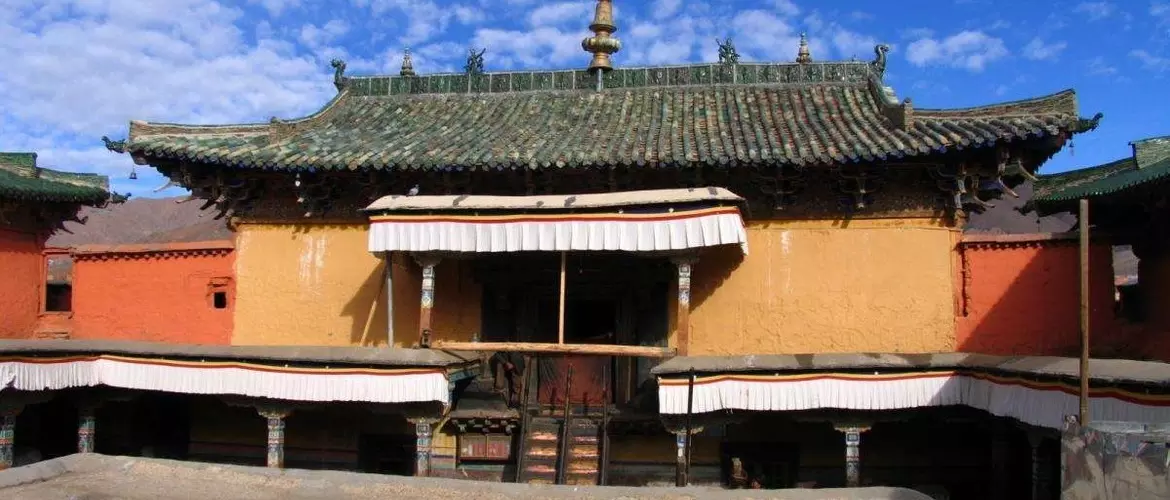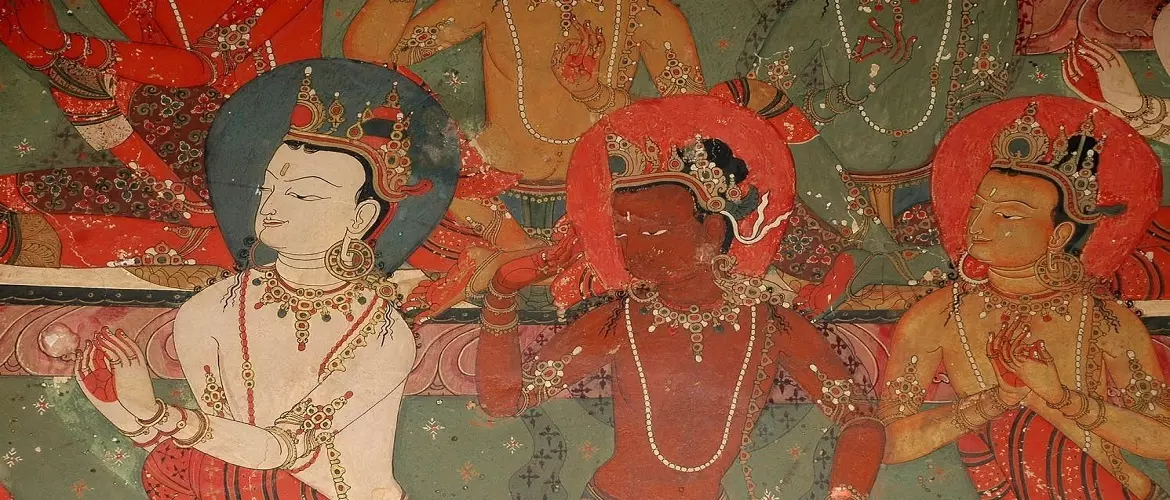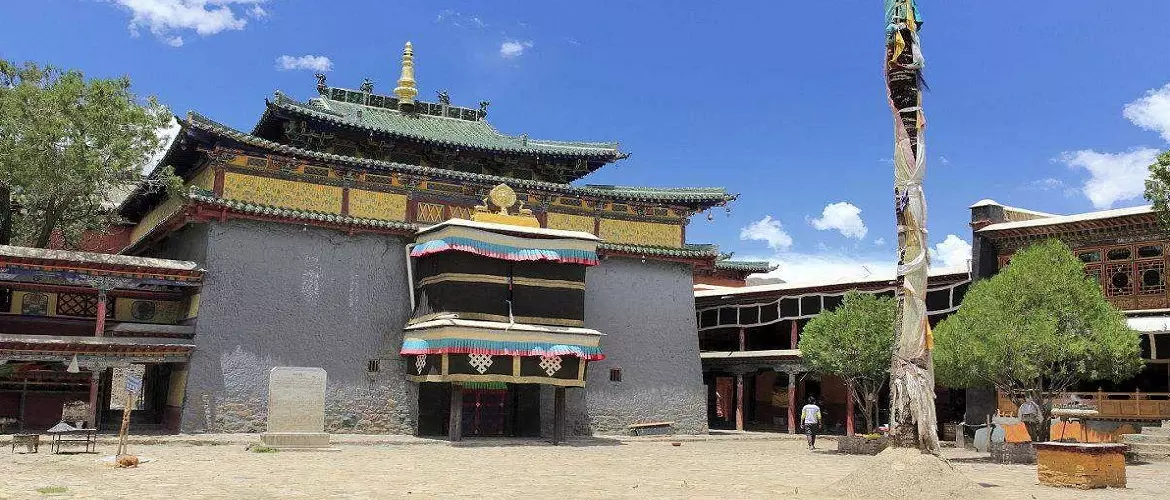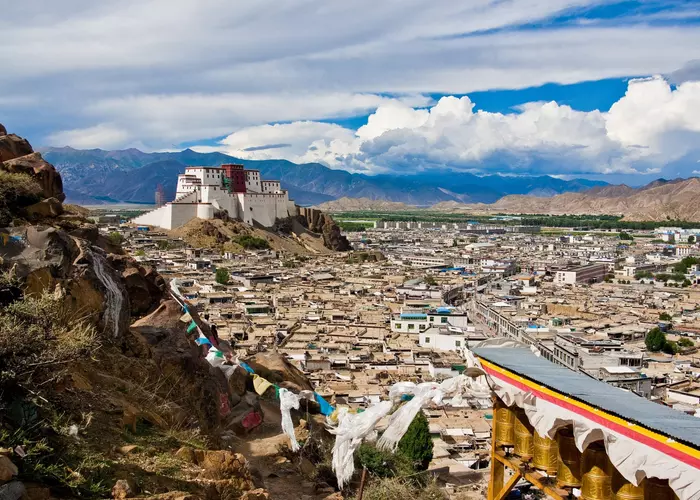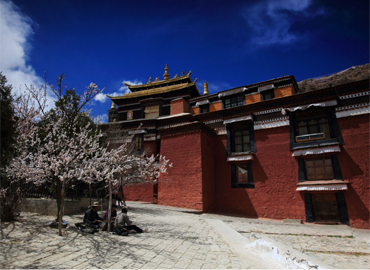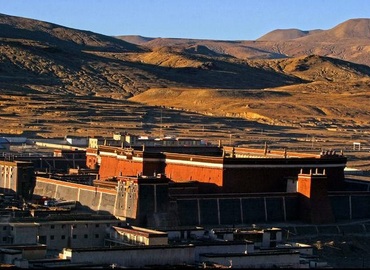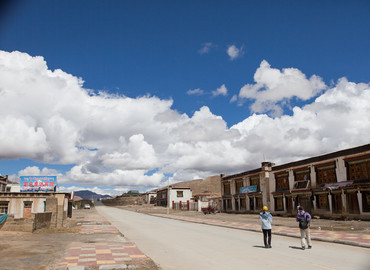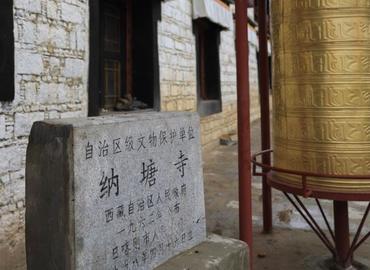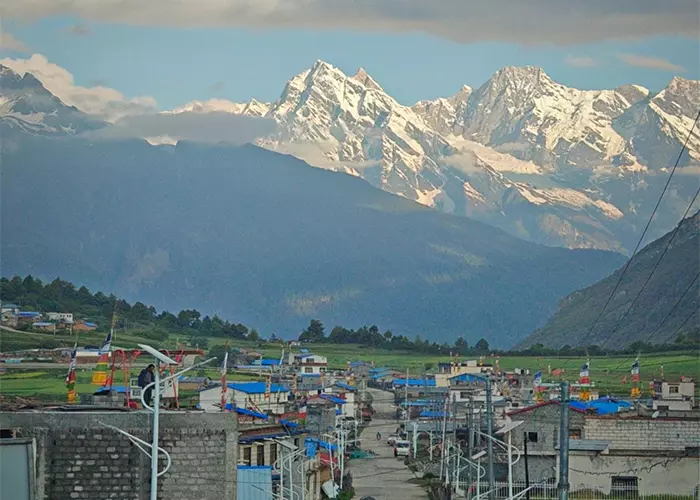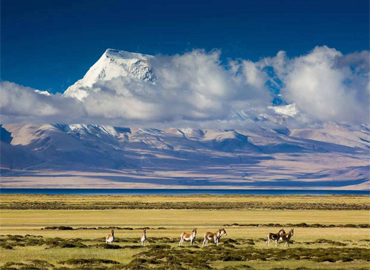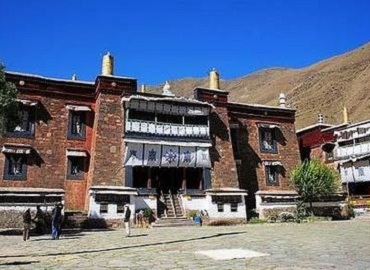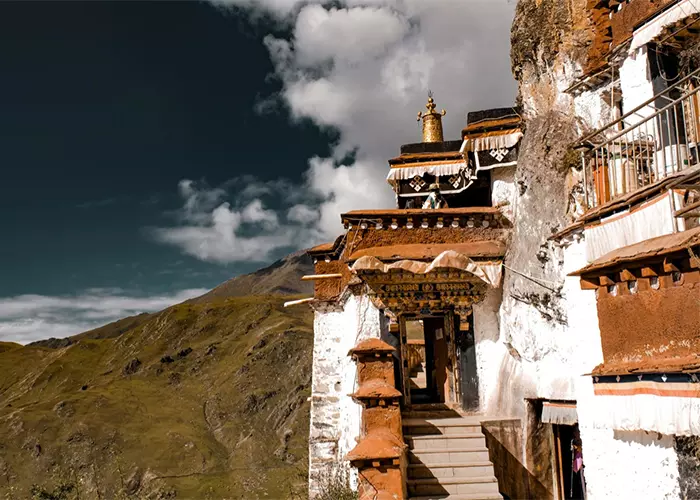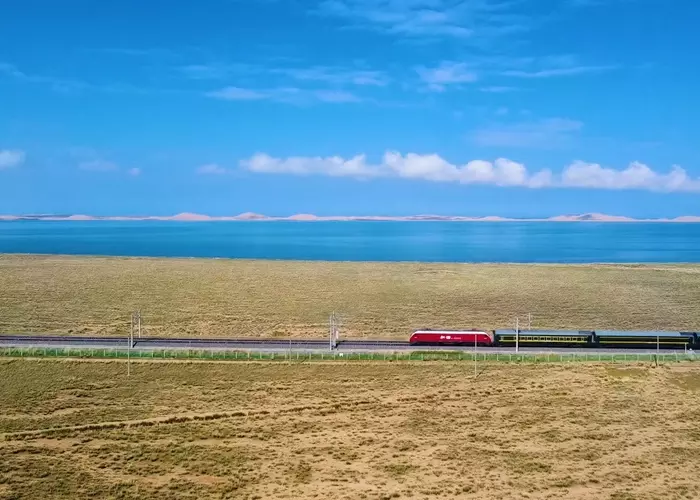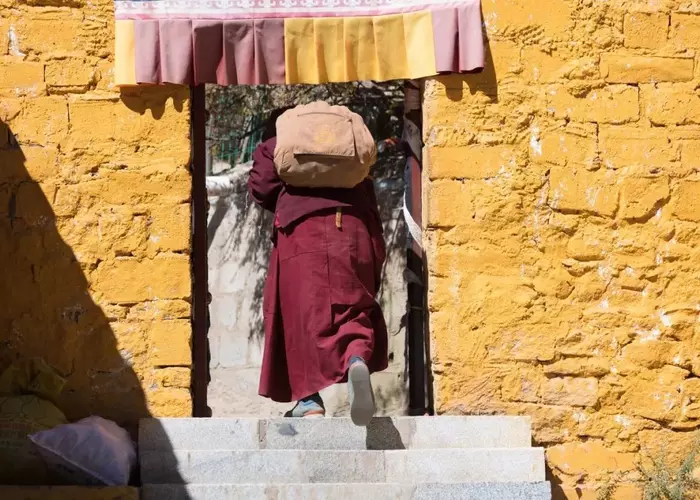Shalu Monastery is a treat for the traveler when sight is both a pleasure to explore and of great importance in local history and culture. Such is Shalu Monastery, which dates back to the 11th century. Shalu Monastery rose to prominence in the 14th century when its abbot, Buton Rinchen Drup, emerged as the foremost interpreter and compiler of Sanskrit Buddhist texts of the day. it also became a center for training in skills such as trance walking and thumo (generating internal heat to survive in cold weather), feats made famous by the flying monks of Alexandra David-Neel’s book Magic and Mystery in Tibet.
In the abstract, the design of Shalu Monastery represents the paradise of Chenresig, a haven from all worldly suffering. In the concrete, Shalu Monastery is the only monastery in Tibet that combines Tibetan and Chinese styles in its design. Much of the original structure was destroyed by an earthquake in the 14th century and, as this was a time of Mongal patronage, many Han artisans were employed in the construction. The green-tiled Chinese style, clearly visible as you approach, is one of Shalu Monastery’s most easily recognizable features.
What remained of the original 11th century Tibetan-style monastery was largely destroyed in the Culture Revolution, but the Chinese-influenced inner Serkhang has survived reasonably well. if you enjoy looking at murals, Shalu Monastery has some fine ones from the 14th century that fuse Chinese, Mongol and Newari styles. The best murals line the walls of a corridor that rings the central assembly hall; bring a powerful torch to really appreciated these.
The inner Serkhang contains a scripture chapel, with lovely 14th-century mandala murals. The west chapel had a black stone statue of Chenresig Kasrapani, Shalu Monastery’s holiest relic. The northern chapel has more fine murals, including one in the left corner depicting Shalu Monastery’s founder. There are a couple of upper chapels, including the Mudu Lhakhang, which holds the funeral chorten of Buton.
Lhasa–Tsetang–Shigatse–Namtso–Lhasa
Discover the mysteries of Tibetan Buddhism in Lhasa, Tsedang and Shigatse. Appreciate holy lakes of Yamdrok and Namtso.
Xining-Lhasa-Tsetang-Gyantse-Shigatse-Tingri-Shigatse-Namtso-Lhasa
Mt.Everest adventure from Qinghai Lake by train. Visit ancient temples to gain insight into Tibetan Buddhist culture.
Lhasa - Tsetang - Shigatse - Lhasa
Read the most splendid chapters of Tibetan history, culture and religons by visiting Lhasa, Tsedang and Shigatse.
Email response within 0.5~24 hours.


